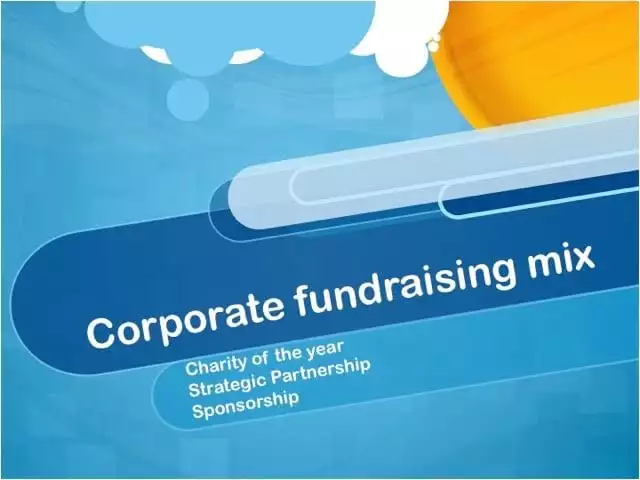Don’t turn your back on charity of the year – a good source of (often unrestricted) income
In 2018 it is not uncommon to see charities turning their back on Charity of the Year (COTY) partnerships. Whilst some charities choose not to target these types of partnership for good reason (for example if they have a very niche cause that means their charity lacks mainstream appeal) others are walking away from this type of relationship without a sound rationale.
In an era when securing income is tougher than ever it is odd to see charities turning away from a potentially good source of funding.
Advertisement
Let’s look at a few facts
1. Overall corporate giving is flat and has been for about ten years, according to CAF’s Corporate Giving by the FTSE 100 (March 2016) and NVCO Civil Society Almanac 2017). There is no scope to win a bigger slice of a growing market. Instead, the only way to grow income is by winning market share off others.
2. COTY partnerships are still the preferred way for many companies to engage with a charity. There is a clear trend for strategic partnerships between companies and charities; this is a good thing but COTY is still a big segment of the corporate market.
3. COTY partnerships can deliver unrestricted or “soft restricted” income at a time when other sources of unrestricted money, such as regular giving, are under extreme pressure. A recent article shared via UK Fundraising showed how much charities value unrestricted income.
4. Not all COTY partnerships go to charities with strong brands. Of course some of the mega-COTYs, like ones with Tesco and Morrisons, tend to go to big well know charities and it is obvious why. However, there are many COTYs that are secured by smaller charities and some opportunities (e.g. Deutsche Bank) that exclude big organisations. We know of around 100 opportunities where smaller charities stand a really good chance.
Should every charity target COTY opportunities?
No. Some charities should recognise that their cause or proposition doesn’t work for this kind of partnership. For most COTYs the main decision driver for the company is the ability for the charity to inspire and motivate staff. If a cause area is very niche then the chances are it won’t appeal to a broad section of a company’s staff.

Are COTY partnerships just for big charities with big teams?
No. Not all companies want big partners and not all relationships require huge amounts of work by the charity. Many firms in the legal, finance and banking sectors are happy to take on smaller charities and recognise that the partner charity will have lean teams. It is worth noting that these types of companies often have between one and five UK sites meaning that it is not difficult to be visible at each office.
What action should your charity take?
First, think objectively about your cause. Does it have enough mainstream appeal to inspire a company’s workforce? If the answer is yes then go through the following steps:
1. Consider the true cost.
When you win a COTY partnership there will be some account management requirements. You should consider the balance of effort and reward. In many cases, and particularly when working with the types of professional services firms in the law, banking and finance sector, the account management is relatively ‘light touch’. However, you should always assess each opportunity on its merit (see point 3 on research).
2. Be targeted.
Don’t aim at the entire market if you can’t resource the new business development process. Instead segment the market and prioritise a few segments. For example, you could look at all “mid-sized” opportunities, or only aim for two or three specific business sectors.
3. Do your research.
You need a good prospect pool to aim at. Prospect research is skill and charities should not underestimate this. There will be a need to be a proper investment of time and effort in research (or budget to buy the research in from outside). The research phase should deliver some sense of the work involved to manage the partnership (e.g. supporting staff fundraising activities, giving talks, supplying beneficiary stories, delivering against PR targets).
4. Create a good proposition.
Staff motivation is the business benefit that a COTY partnership delivers for a company is. So your proposition should highlight why your charity is able to easily motivate staff and keep them motivated. Think about how you can provide things like beneficiary stories, talks from experts in your organisation, inspiring videos etc.
5. Set the right KPIs.
Like all types of corporate fundraising, the returns for any effort expended come further down the line. The corporate fundraiser(s) will be working at least a year in advance and so effort in one financial year will not pay back until future years. As a minimum you should think about tracking: the number of qualified prospects you have; the number of conversations that are taking place; the number of proposals being submitted. This is not an exact science but will deliver some milestones to help show progress towards the ultimate goal of securing a partnership.
If you follow the above tips then you could build a great programme delivering a good source of mostly unrestricted money.
If you are interested in short-cutting your prospect research and quickly adding prospects to you pipeline then find out more.
Grahame Darnell is Managing Director of Darnell Consulting Ltd



